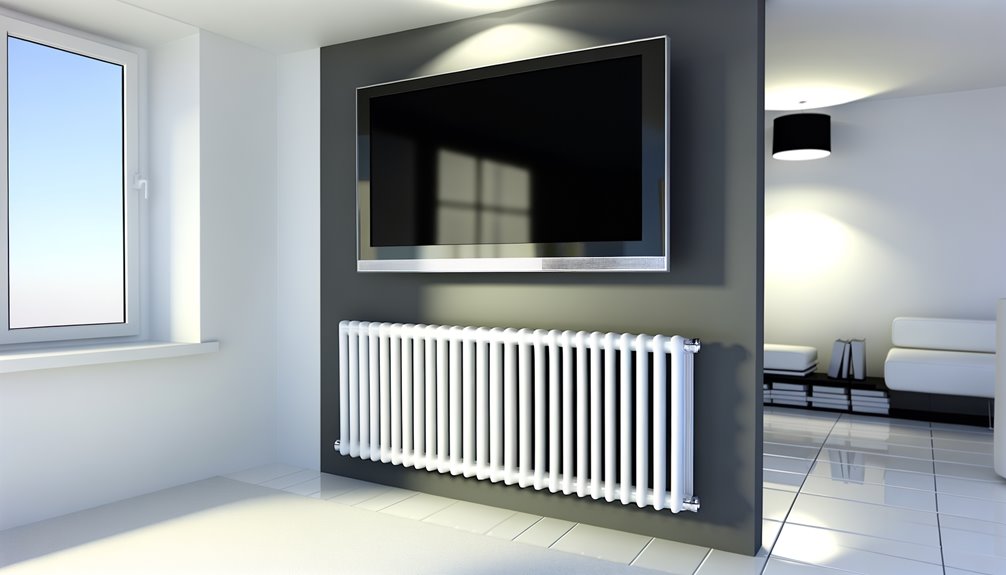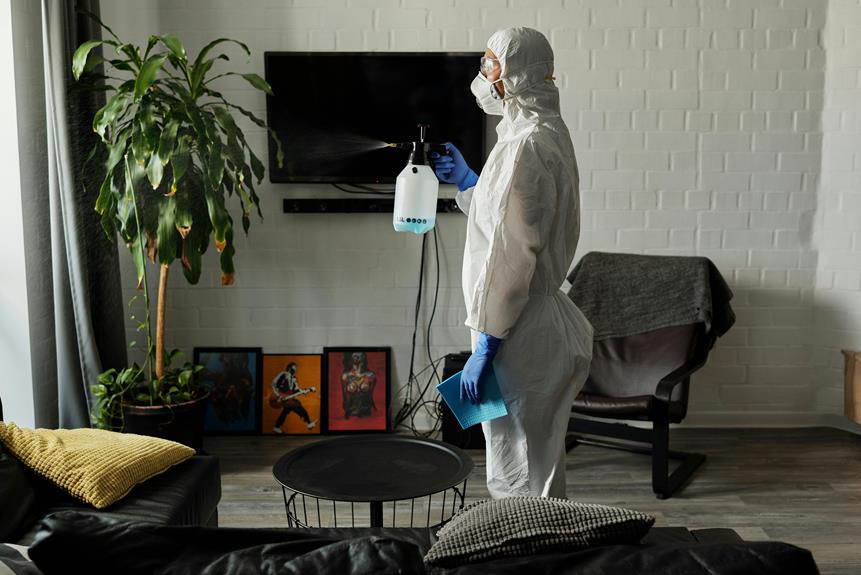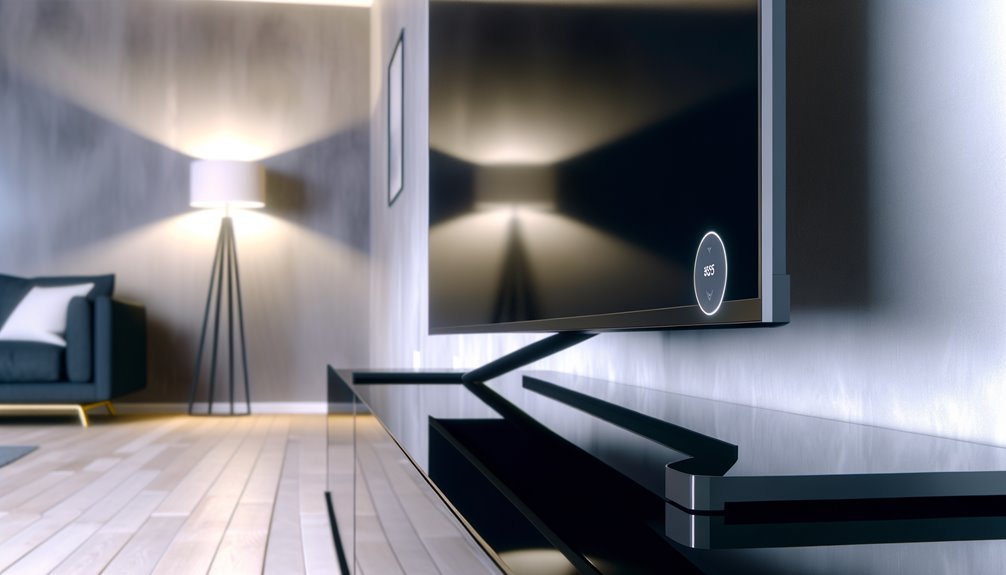Placing a TV above a radiator is not recommended due to the considerable risks involved. The heat generated by radiators, primarily through convection, can markedly elevate temperatures, posing a hazard to electronic devices above it. This excessive heat can lead to various forms of damage, such as dead pixels, electrical faults, and potentially even fire risks due to warped internal components. It is essential to maintain at least a 15 cm gap between the TV and the radiator if alternative placements are unavailable. Employing measures such as radiator covers or using thermostatic valves to control heat output could mitigate these risks. Understanding these precautions in greater detail may lead to safer and more effective placement solutions.
Understanding Radiator Mechanics
Radiators primarily function through convection, a process where water is heated to warm the surrounding air.
This mechanism creates a convection current, causing heat to rise directly toward any electronics, such as a TV, placed above a radiator.
To protect your TV from heat exposure, guarantee proper ventilation and strategic placement to mitigate risks.
This preemptive approach preserves device functionality and safety.
Risks of TV Over Radiators
Understanding the mechanics of how radiators operate highlights the potential hazards of placing a TV directly above one.
Excessive heat from the radiator can lead to potential damage, including dead pixels and electrical faults. Rising heat may desaturate images and reduce color quality, while overheating can warp internal components, increasing fire risks.
To protect the TV, maintain at least 15 cm of cooling air space.
Safe TV Mounting Strategies
To safely mount a TV above a radiator, it is vital to maintain a minimum distance of 15 cm between the devices to mitigate heat exposure and prevent damage. Using a radiator cover helps deflect heat away, while a full-motion wall mount facilitates safe TV mounting by allowing adjustments to keep warm air at bay. Installing a thermostatic valve controls heat output.
| Strategy | Benefit | Consideration |
|---|---|---|
| Radiator Cover | Deflects heat away from TV | Guarantee adequate clearance |
| Full Motion Wall Mount | Adjust position to minimize heat exposure | Check wall strength and fit |
| Thermostatic Valve | Control radiator heat output | Regular maintenance required |
Heat Management Techniques
Given the potential for heat damage when mounting a TV above a radiator, employing effective heat management techniques is crucial.
Installing a shelf or radiator cover can help deflect heat, while a thermostatic radiator valve controls heating levels.
Using a full-motion wall bracket allows adjustment of the TV's position, enhancing airflow.
Regular temperature monitoring with a thermometer further guarantees the safety of your TV above the radiator.
TV Placement Recommendations
Many experts recommend maintaining a minimum distance of 15 cm between a TV and a radiator to prevent overheating and preserve the device's longevity.
- Mount the TV on the wall to maximize airflow and utilize wall space efficiently.
- Install a radiator cover to deflect heat from your radiator.
- Use wall shelves as a buffer to help protect the TV.
- Opt for thermostatic valves for better central heating control.
Alternative Heating Solutions
Alternative heating solutions are increasingly considered by homeowners looking to mitigate the risks associated with placing a TV above a radiator.
Options like underfloor heating distribute warm air evenly, avoiding high temperatures near electronics.
Infrared heaters target specific areas without warming the surrounding air, and designer radiators can be strategically placed to guarantee a safe heating system without compromising TV safety.
Ensuring Optimal Viewing Comfort
While exploring heating solutions to safely integrate a TV above a radiator, it is equally important to focus on the ergonomic setup to secure viewer comfort.
- Position TV at eye level, ideally 42-48 inches from the floor
- Maintain a minimum 15 cm distance between radiator and TV
- Use adjustable mounts for ideal viewing angles
- Regularly monitor the operating temperature to confirm TV functions within safe limits
Frequently Asked Questions
Can I Put My TV on the Wall Above a Radiator?
When considering TV placement, assess heat damage risks and explore wall mount options. Adhere to radiator safety guidelines, contemplate alternative locations, and prioritize aesthetic design choices and room layout strategies for ideal viewing and safety.
How Close Can a TV Be to a Radiator?
For ideal TV placement safety, maintain sufficient distance from radiators to mitigate overheating risks. Wall mounting guidelines suggest at least six inches to guarantee room temperature balance and prevent damage from radiator heat effects.
What Can You Put Above a Radiator?
When considering what to place above a radiator, options include decorative shelves, artwork, and plant arrangements. Guarantee adherence to safety regulations, optimize heating efficiency, and consider wall insulation and color considerations for aesthetic coherence.
Is It Okay to Put a Sofa in Front of a Radiator?
Positioning a sofa directly in front of a radiator compromises heat distribution and radiator safety. Ideal furniture arrangement and interior design prioritize space utilization and comfort considerations while ensuring effective heat dispersal in living spaces.
Conclusion
In summary, mounting a television above a radiator involves significant risks due to heat exposure, which can impair device functionality and reduce lifespan. Employing safe mounting strategies and heat management techniques is essential for protecting electronic devices. Additionally, considering alternative heating solutions and reevaluating placement can enhance both device performance and viewer comfort. As a result, it is advisable to explore various configurations that prioritize the longevity of electronic components and the quality of the viewing experience.



